Helena Cuesta
Can MusicGen Create Training Data for MIR Tasks?
Nov 15, 2023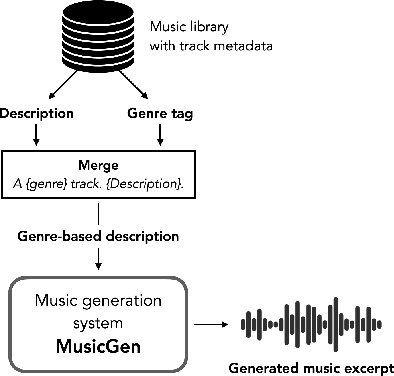

Abstract:We are investigating the broader concept of using AI-based generative music systems to generate training data for Music Information Retrieval (MIR) tasks. To kick off this line of work, we ran an initial experiment in which we trained a genre classifier on a fully artificial music dataset created with MusicGen. We constructed over 50 000 genre- conditioned textual descriptions and generated a collection of music excerpts that covers five musical genres. Our preliminary results show that the proposed model can learn genre-specific characteristics from artificial music tracks that generalise well to real-world music recordings.
EIHW-MTG: Second DiCOVA Challenge System Report
Oct 18, 2021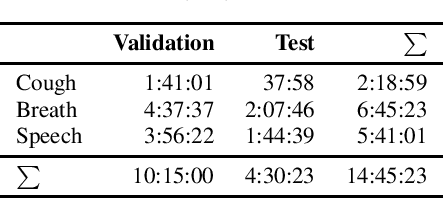
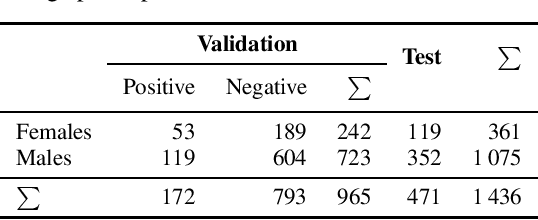
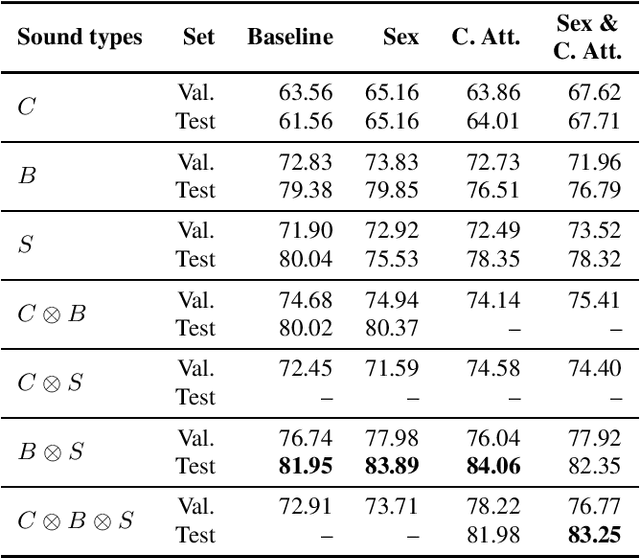
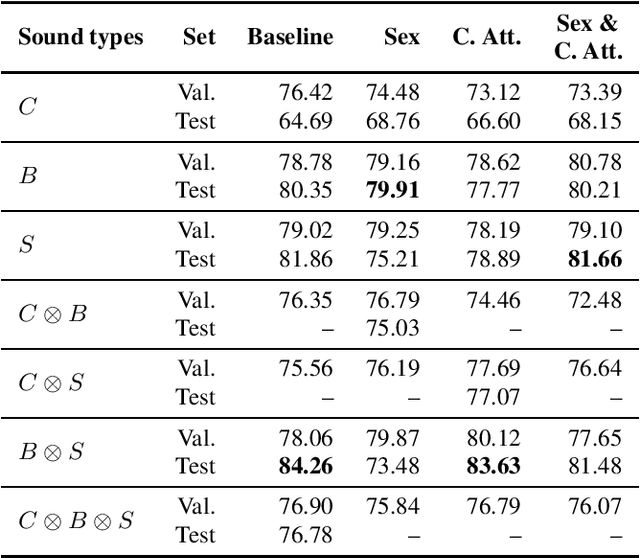
Abstract:This work presents an outer product-based approach to fuse the embedded representations generated from the spectrograms of cough, breath, and speech samples for the automatic detection of COVID-19. To extract deep learnt representations from the spectrograms, we compare the performance of a CNN trained from scratch and a ResNet18 architecture fine-tuned for the task at hand. Furthermore, we investigate whether the patients' sex and the use of contextual attention mechanisms is beneficial. Our experiments use the dataset released as part of the Second Diagnosing COVID-19 using Acoustics (DiCOVA) Challenge. The results suggest the suitability of fusing breath and speech information to detect COVID-19. An Area Under the Curve (AUC) of 84.06% is obtained on the test partition when using a CNN trained from scratch with contextual attention mechanisms. When using the ResNet18 architecture for feature extraction, the baseline model scores the highest performance with an AUC of 84.26%.
EIHW-MTG DiCOVA 2021 Challenge System Report
Oct 13, 2021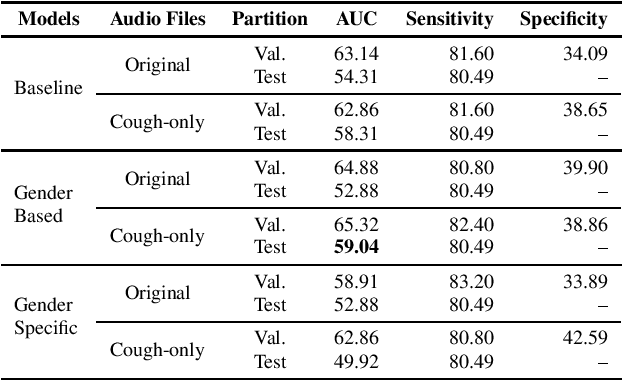
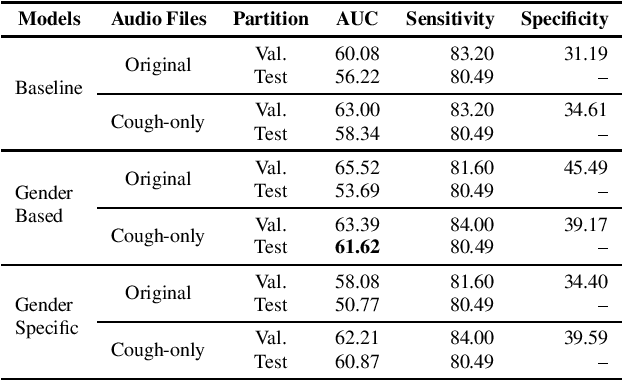
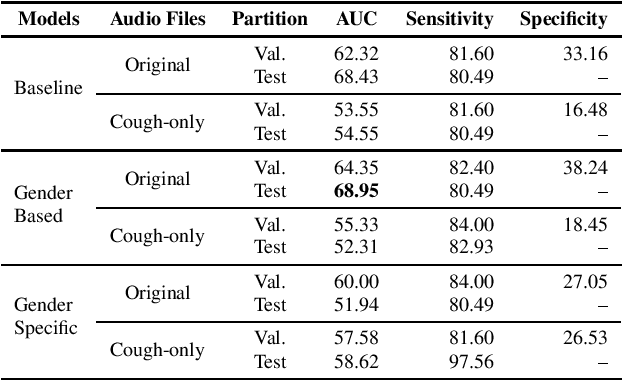
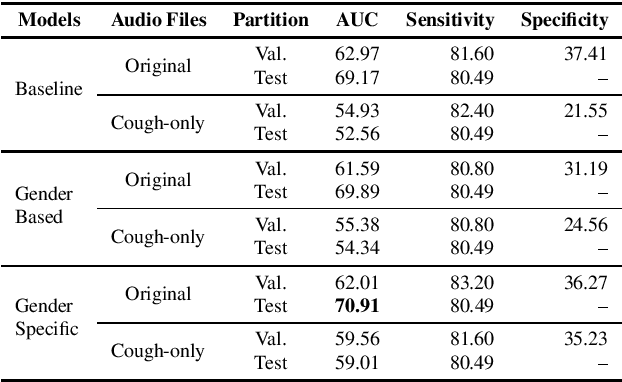
Abstract:This paper aims to automatically detect COVID-19 patients by analysing the acoustic information embedded in coughs. COVID-19 affects the respiratory system, and, consequently, respiratory-related signals have the potential to contain salient information for the task at hand. We focus on analysing the spectrogram representations of coughing samples with the aim to investigate whether COVID-19 alters the frequency content of these signals. Furthermore, this work also assesses the impact of gender in the automatic detection of COVID-19. To extract deep learnt representations of the spectrograms, we compare the performance of a cough-specific, and a Resnet18 pre-trained Convolutional Neural Network (CNN). Additionally, our approach explores the use of contextual attention, so the model can learn to highlight the most relevant deep learnt features extracted by the CNN. We conduct our experiments on the dataset released for the Cough Sound Track of the DiCOVA 2021 Challenge. The best performance on the test set is obtained using the Resnet18 pre-trained CNN with contextual attention, which scored an Area Under the Curve (AUC) of 70.91 at 80% sensitivity.
A Deep Learning Based Analysis-Synthesis Framework For Unison Singing
Sep 21, 2020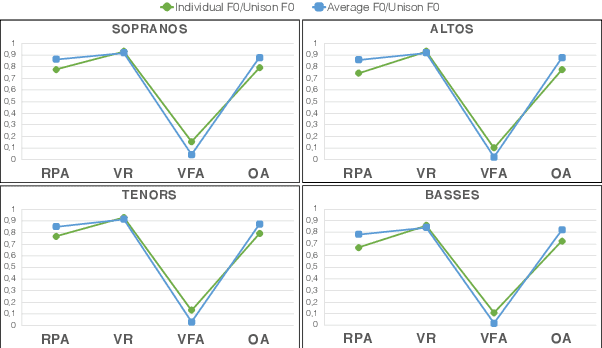
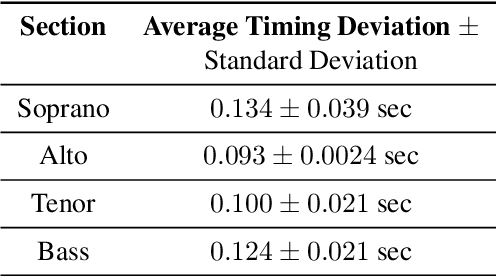
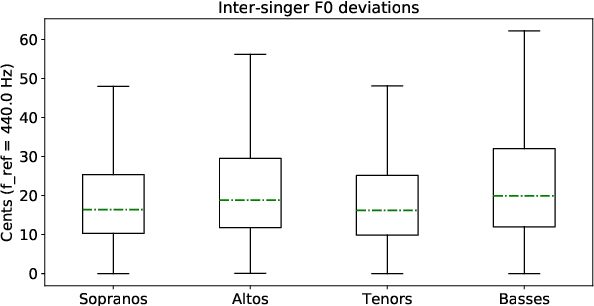
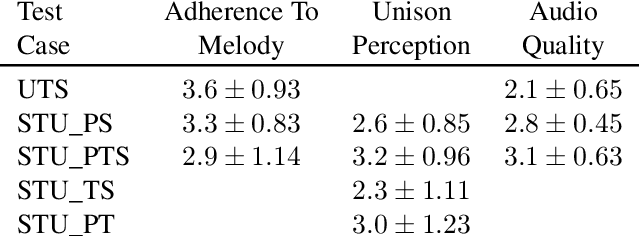
Abstract:Unison singing is the name given to an ensemble of singers simultaneously singing the same melody and lyrics. While each individual singer in a unison sings the same principle melody, there are slight timing and pitch deviations between the singers, which, along with the ensemble of timbres, give the listener a perceived sense of "unison". In this paper, we present a study of unison singing in the context of choirs; utilising some recently proposed deep-learning based methodologies, we analyse the fundamental frequency (F0) distribution of the individual singers in recordings of unison mixtures. Based on the analysis, we propose a system for synthesising a unison signal from an a cappella input and a single voice prototype representative of a unison mixture. We use subjective listening tests to evaluate perceptual factors of our proposed system for synthesis, including quality, adherence to the melody as well the degree of perceived unison.
Multiple F0 Estimation in Vocal Ensembles using Convolutional Neural Networks
Sep 09, 2020
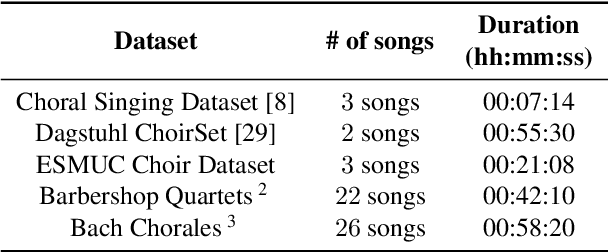
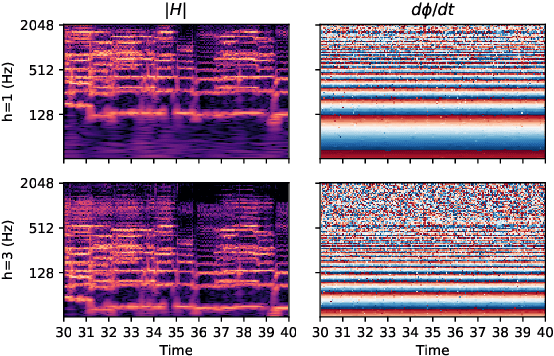
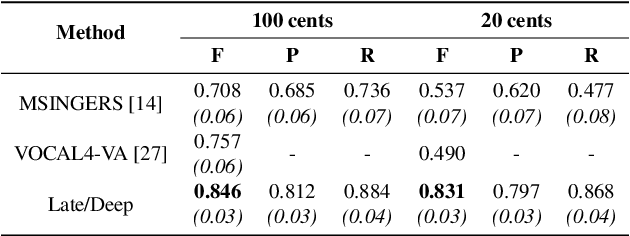
Abstract:This paper addresses the extraction of multiple F0 values from polyphonic and a cappella vocal performances using convolutional neural networks (CNNs). We address the major challenges of ensemble singing, i.e., all melodic sources are vocals and singers sing in harmony. We build upon an existing architecture to produce a pitch salience function of the input signal, where the harmonic constant-Q transform (HCQT) and its associated phase differentials are used as an input representation. The pitch salience function is subsequently thresholded to obtain a multiple F0 estimation output. For training, we build a dataset that comprises several multi-track datasets of vocal quartets with F0 annotations. This work proposes and evaluates a set of CNNs for this task in diverse scenarios and data configurations, including recordings with additional reverb. Our models outperform a state-of-the-art method intended for the same music genre when evaluated with an increased F0 resolution, as well as a general-purpose method for multi-F0 estimation. We conclude with a discussion on future research directions.
Deep Learning Based Source Separation Applied To Choir Ensembles
Aug 17, 2020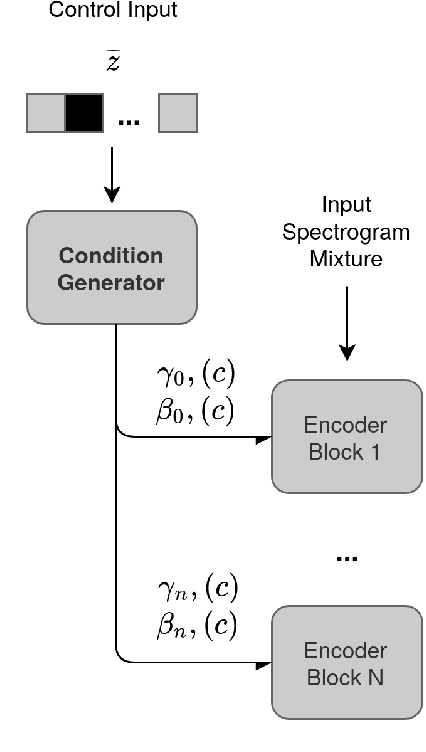
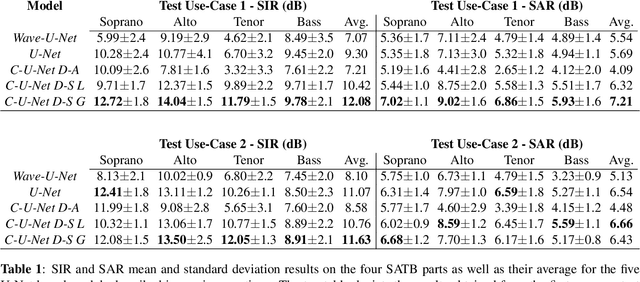
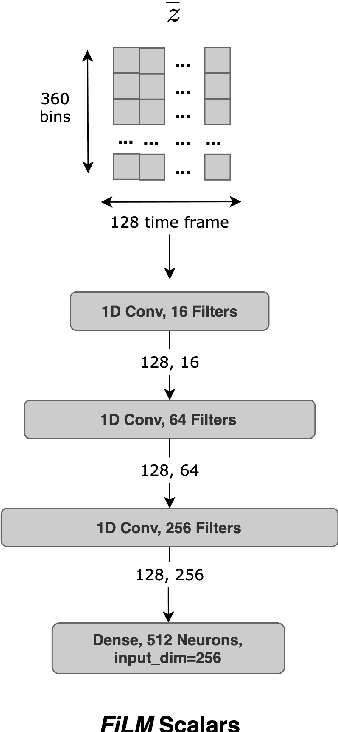
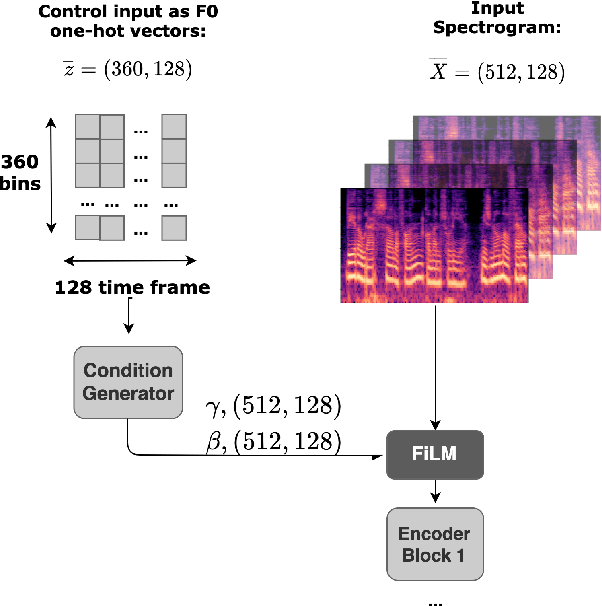
Abstract:Choral singing is a widely practiced form of ensemble singing wherein a group of people sing simultaneously in polyphonic harmony. The most commonly practiced setting for choir ensembles consists of four parts; Soprano, Alto, Tenor and Bass (SATB), each with its own range of fundamental frequencies (F$0$s). The task of source separation for this choral setting entails separating the SATB mixture into the constituent parts. Source separation for musical mixtures is well studied and many deep learning based methodologies have been proposed for the same. However, most of the research has been focused on a typical case which consists in separating vocal, percussion and bass sources from a mixture, each of which has a distinct spectral structure. In contrast, the simultaneous and harmonic nature of ensemble singing leads to high structural similarity and overlap between the spectral components of the sources in a choral mixture, making source separation for choirs a harder task than the typical case. This, along with the lack of an appropriate consolidated dataset has led to a dearth of research in the field so far. In this paper we first assess how well some of the recently developed methodologies for musical source separation perform for the case of SATB choirs. We then propose a novel domain-specific adaptation for conditioning the recently proposed U-Net architecture for musical source separation using the fundamental frequency contour of each of the singing groups and demonstrate that our proposed approach surpasses results from domain-agnostic architectures.
A Framework for Multi-f0 Modeling in SATB Choir Recordings
Apr 10, 2019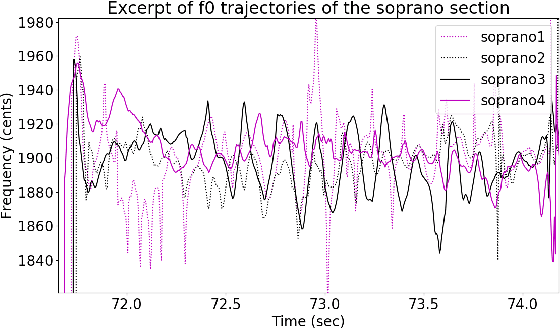
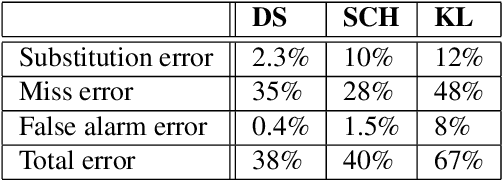
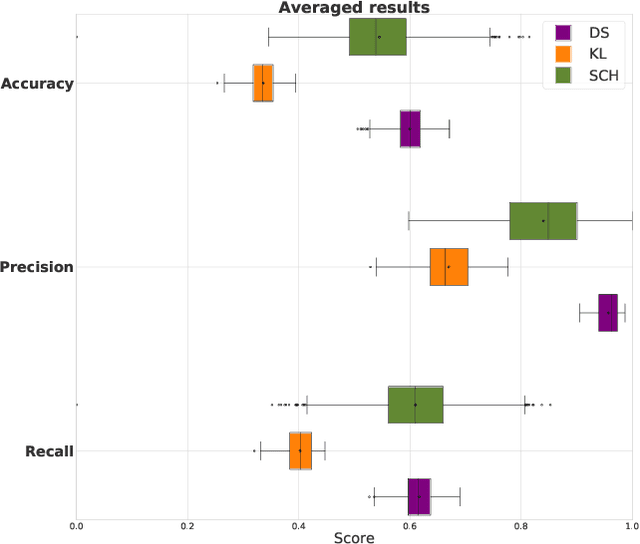
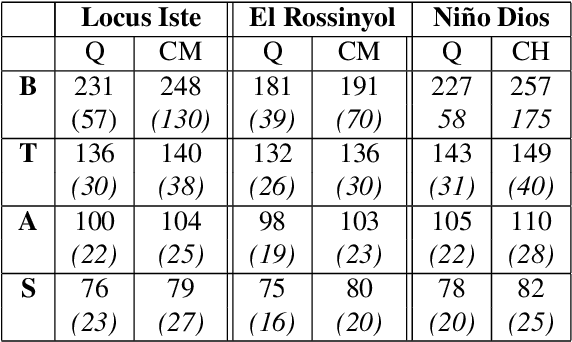
Abstract:Fundamental frequency (f0) modeling is an important but relatively unexplored aspect of choir singing. Performance evaluation as well as auditory analysis of singing, whether individually or in a choir, often depend on extracting f0 contours for the singing voice. However, due to the large number of singers, singing at a similar frequency range, extracting the exact individual pitch contours from choir recordings is a challenging task. In this paper, we address this task and develop a methodology for modeling pitch contours of SATB choir recordings. A typical SATB choir consists of four parts, each covering a distinct range of pitches and often with multiple singers each. We first evaluate some state-of-the-art multi-f0 estimation systems for the particular case of choirs with a single singer per part, and observe that the pitch of individual singers can be estimated to a relatively high degree of accuracy. We observe, however, that the scenario of multiple singers for each choir part (i.e. unison singing) is far more challenging. In this work we propose a methodology based on combining a multi-f0 estimation methodology based on deep learning followed by a set of traditional DSP techniques to model f0 and its dispersion instead of a single f0 trajectory for each choir part. We present and discuss our observations and test our framework with different singer configurations.
Deep Learning for Singing Processing: Achievements, Challenges and Impact on Singers and Listeners
Jul 09, 2018
Abstract:This paper summarizes some recent advances on a set of tasks related to the processing of singing using state-of-the-art deep learning techniques. We discuss their achievements in terms of accuracy and sound quality, and the current challenges, such as availability of data and computing resources. We also discuss the impact that these advances do and will have on listeners and singers when they are integrated in commercial applications.
 Add to Chrome
Add to Chrome Add to Firefox
Add to Firefox Add to Edge
Add to Edge